When it comes to influencer marketing, bigger isn’t always better.
In fact, micro-influencers are almost always the secret weapon behind today’s most effective marketing campaigns.
They’re relatable, trusted, and tend to have sky-high engagement rates compared to macro-influencers and celebrities.
Whether you're a big brand that wants to connect with people on a deeper level or a startup trying to grow on a budget, micro-influencers offer serious ROI.
In this guide, you'll learn:
- What defines a micro-influencer
- Why brands are shifting budgets their way
- How to find, vet, and collaborate with them
- What to pay and how to measure success
- What defines a micro-influencer?
- Why brands are betting on micro-influencers
- Where to find micro-influencers
- Micro-influencer strategy blueprint for 2025
- Nail down audience-platform fit.
- How to budget for micro-influencer campaigns
- Campaign types that work best with micro-influencers
- Performance tracking and ROI measurement
- Micro-influencer mistakes to avoid
- Top micro-influencers in the USA
- Top fashion micro-influencers
- PR lists for micro-influencers
- Brands that work with micro-influencers
- Future of micro-influencers: what’s in store after 2025?
- Do micro-influencers work for B2B brands?
- Is it better to gift or pay micro-influencers?
- Conclusion
What defines a micro-influencer?
First, a quick definition:
A micro-influencer is a social media creator with 10,000 to 100,000 followers on platforms like Instagram, TikTok, YouTube, and X (Twitter).
They sit in the sweet spot between everyday users and internet celebrities. And they’re called “micro” not because their impact is small, but because their audiences are more targeted and personal.
Micro-influencers tend to have:
- Niche audiences: Their content focuses on specific interests—like fitness, skincare, tech gadgets, or parenting.
- High engagement rates: Their followers actually comment, like, and respond to posts. That engagement often outpaces what you'd see with larger influencers.
- Authenticity: They feel like peers, not celebrities. This makes their recommendations more trustworthy and relatable.
- Strong community connections: They interact with followers regularly, answer DMs, and respond to comments. And their content feels like it's speaking to the viewer.
Why brands are betting on micro-influencers
They may not be household names, but they have real sway with the people who follow them. And that’s exactly what makes them so effective for brand partnerships. In fact, HubSpot found that almost half of marketers (47%) say micro-influencers are their most successful partners.
A few reasons for this:
Better ROI across the board
Micro-influencers consistently outperform macro-influencers and celebrities when it comes to engagement rates, cost per engagement, and overall return on investment. You're not just buying reach, you’re buying attention and action.
| Metric | Micro-influencers | Macro-influencers |
|---|---|---|
| Follower count | 10K–100K | 500K–1M |
| Cost per post | $100–$500 | $5,000–$10,000 |
| Engagement rate | 3.6% (IG), 13.33% (TikTok) | ~1.7% |
| Conversion rate | +20% vs. macro | Baseline |
| ROI | Higher on average due to lower rates and better conversions | Lower on average due to broader reach and less authenticity |
Unmatched brand authenticity
These creators come off as real people, not walking billboards. Their followers trust their recommendations because they’re personal, not polished PR.
Niche credibility and trust
Many micro-influencers are actual professionals in their space. Think fitness coaches, travel vloggers, and finance educators. They’ve built authority and trust by living what they talk about day in and day out. So, when they endorse a relevant product, it carries weight.
Better targeting
Larger creators and celebs are great for demand generation because their faces get noticed by everyone. But casting a wide net means there's no guarantee you're hitting enough (or any) of your ICP. Micro-influencers' niche audiences mean you're guaranteed to tap into the audience you're looking for.
A natural fit for how we consume content
Social media has evolved. It’s no longer just about watching big creators from a distance. It’s about connection, conversation, and community. Micro-influencers thrive in that space because they actually talk with their audiences, not just at them.
Storytelling that scales
You don’t have to go all in on one big name. Brands are building networks of dozens (even hundreds) of micro-influencers, each telling your story in their own way. It also opens the door for UGC and other scalable content plays.
Over time, this compounds. Instead of spending your whole influencer budget on one or two endorsements, you can stretch it across dozens of influencers and tap into a percentage of their audience on demand.
Where to find micro-influencers
Finding the right micro-influencers doesn’t have to be complicated or expensive. As someone who's involved in your industry, you might already know a few creators off the top of your head. Either way, you've got options, no matter whether you're bootstrapping or scaling a full campaign.
Free influencer discovery methods
1. Search manually on social platforms.
Hashtags, location tags, and keyword searches on Instagram, TikTok, YouTube, or X will quickly surface creators in your niche with strong engagement on recent posts.
Things like:
- "Skincare routine"
- "Home gym setup"
- "Finance tips"
- "Plant-based recipes"
You'll find tons of people like these, plus additional keywords you can search for:
Most of them will be in that 10,000–100,000 range or just slightly above it (which is still worth your attention, particularly on TikTok, where follower counts are more arbitrary).
Pro tip: Check if they reply to comments. It's a sign they care about their community.
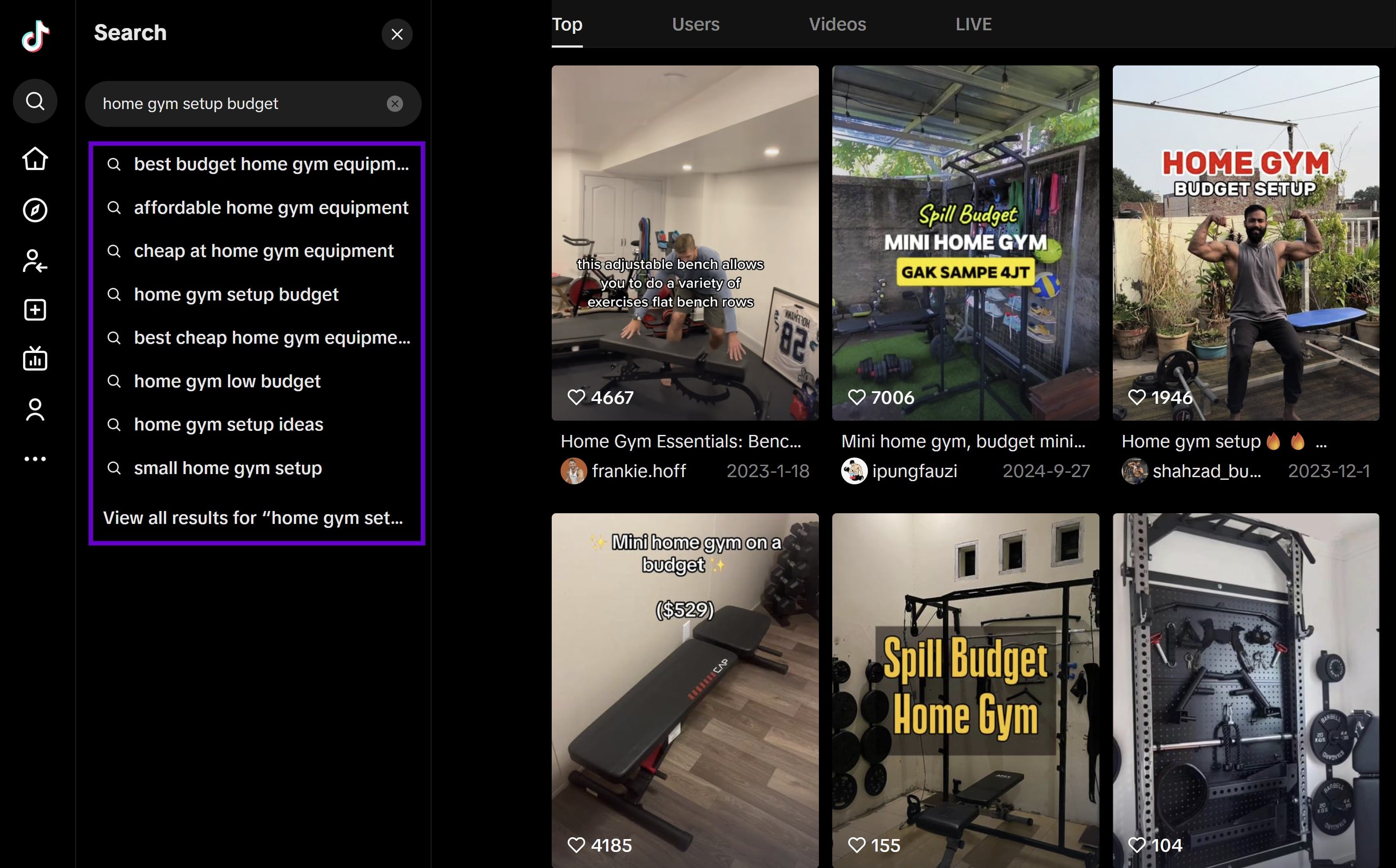
2. Check your own followers.
You probably already have micro-influencers following your brand. These are golden opportunities because they already like and support what you're doing. They might even be telling their followers about you already.
What to look for:
- Followers who are posting consistently in your niche
- Accounts with a strong aesthetic or video presence
- Bios that mention they’re a creator or content partner
- Blue check marks (you'll see this before clicking)
3. Use advanced search tools.
X’s search filters let you filter by keywords in bios or content captions to surface niche creators organically.
Use advanced search like: "skincare routine" ("secret" OR "acne").
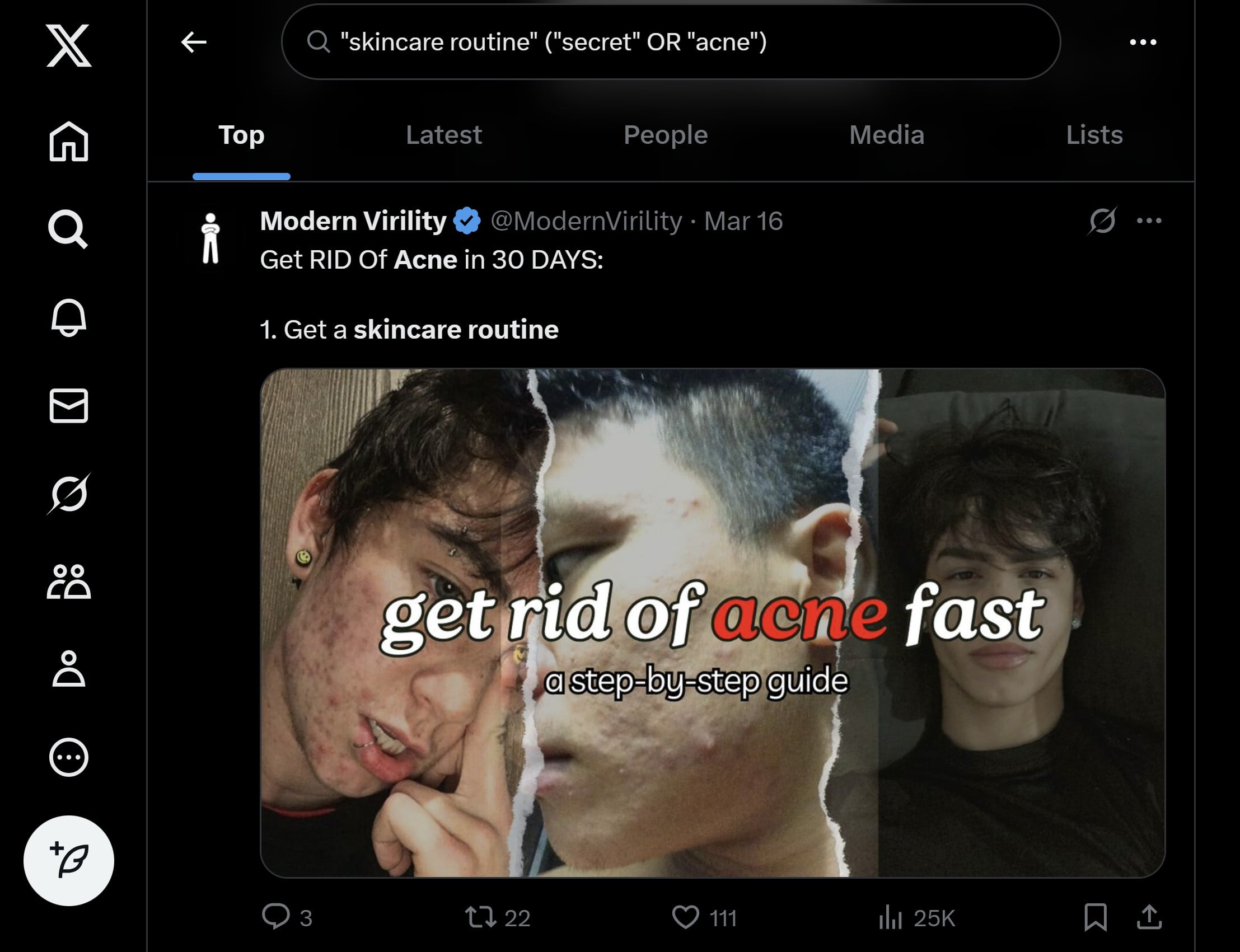
X makes it easy to set this up without knowing how to plug in Boolean operators.
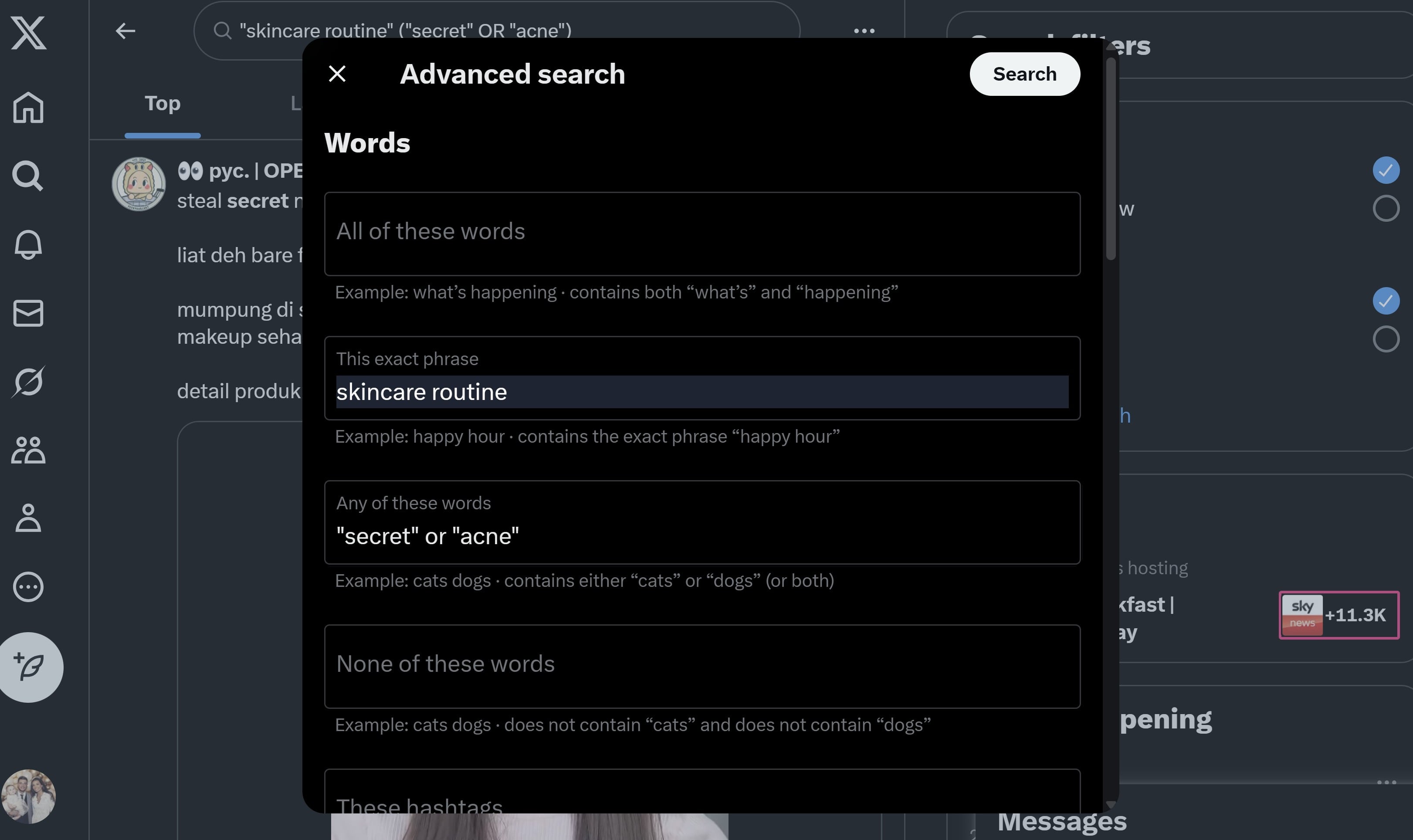
In addition to finding people who can test/promote your products, this'll give you some good ideas for marketing angles you haven't thought of.
4. Browse your competitors’ tags and mentions.
See who’s promoting similar brands. Many micro-influencers tag the companies they work with and vice versa. Use that to your advantage.
Let's say you sell pickleball gear. A company like Enhance Pickleball (@enhancepickleball) competes with you both on the audience attention front and the product sales front.
Their content is mostly product-led, but guess what their feed is full of? Influencer content.
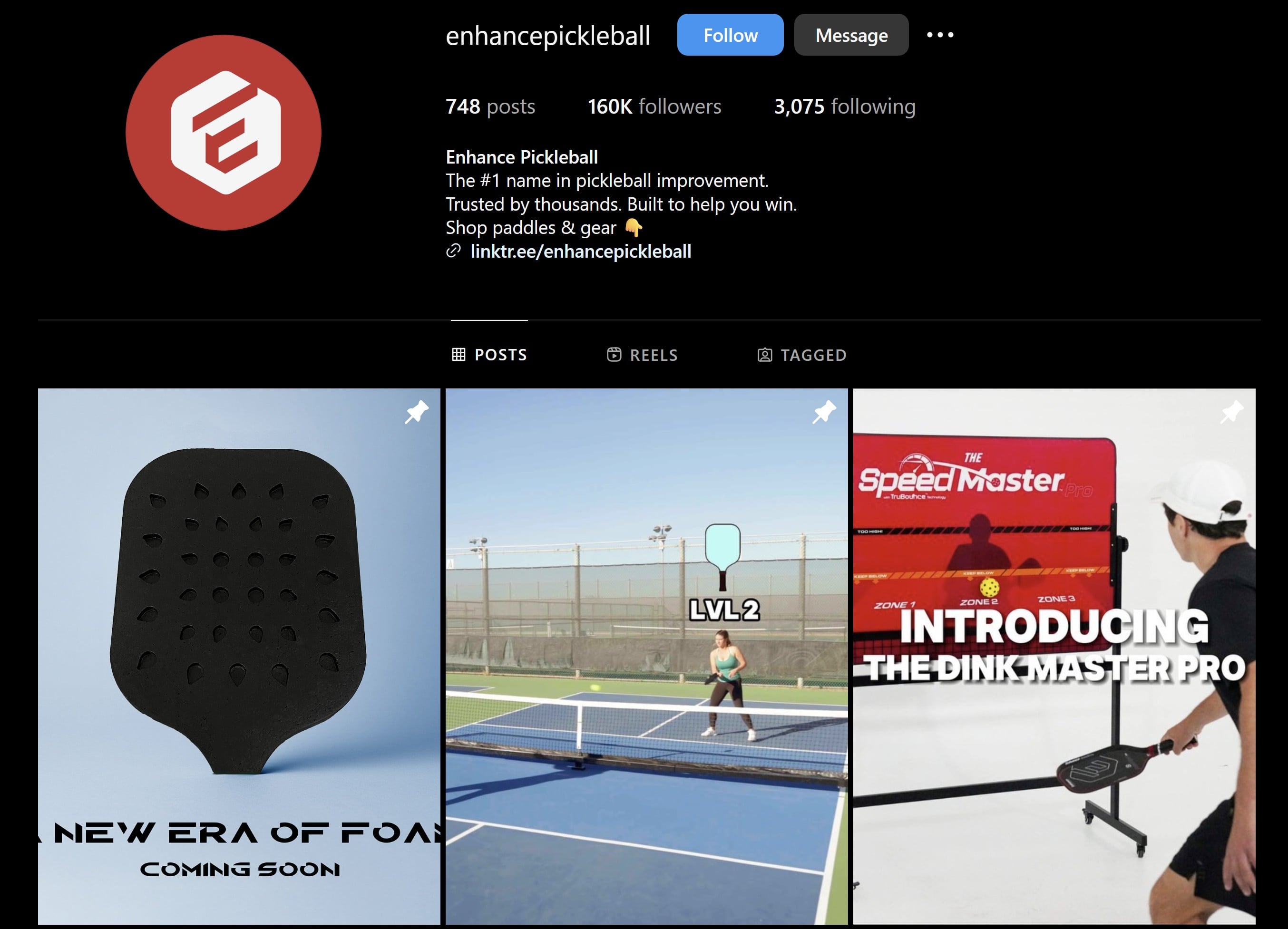
Pro tip: Go deeper here using tools like Blackmagic.so (for creator analytics + search), Tweet Hunter (great for finding engaging creators by topic), and Twemex (adds sidebar insights to trending tweets and influencers).
Paid influencer discovery tools and platforms
Influencer marketplaces
Platforms like Collabstr, Upfluence, and Heepsy let you filter creators by audience size, niche, location, and engagement. This is what we use to manage outreach, contracts, and payments all in one place.
Creator marketing platforms
Tools like Aspire, Modash, and CreatorIQ are more robust options for brands managing multiple influencer relationships. They include analytics, vetting tools, and CRM-style dashboards.
UGC platforms
If you’re more interested in content creation than audience exposure, a platform like Billo, Insense, or Trend.io will connect you with creators who’ll shoot videos or photos you can reuse across socials, then repurpose the high-performing ones as ads.
Agencies and talent managers
An influencer marketing agency is more hands-off, but you’ll pay a premium. This is a great choice if you want curated matches and fully managed campaigns. At Influize, we build every client a fully individualized campaign with micro-influencers specifically tailored to their target audience.
Micro-influencer strategy blueprint for 2025
Success with any type of influencer marketing lies in strategic alignment. You've got to match the right creators with the right goals, at the right time, using the right tools.
Define clear goals first.
We're not talking about impressions or likes here. Everyone wants that. We're talking about real business outcomes. There's quite a bit to cover in this stage, but laying the groundwork properly sets you up for a phenomenal campaign later on.
Know your funnel stage.
Are you driving awareness, consideration, conversions, or loyalty? Micro-influencers can do all of these, but not all at once. A travel creator with 15k followers may be great for inspiring top-of-funnel interest, but not the right fit to drive direct sales unless you pair their content with a promo code or retargeting campaign.
Choose metrics that map to goals.
For awareness, look at reach and save rates. For engagement, prioritize comments over likes. For conversions, use trackable affiliate links, UTM parameters, or branded discount codes. Set a benchmark for ROI ahead of time — ideally, one that compares CAC (cost per acquired customer) across your paid channels.
Align expectations internally.
If your exec team expects a flood of sales from a few shoutouts, they’ll call it a failure before it’s had a chance to work. Remind stakeholders that influencer marketing (especially with micros) is a compounding asset. Campaigns normally start slow, then scale up as social proof and trust build over time.
Set your time horizons wisely.
Micro-influencer impact builds over weeks, not hours. Don’t set a 7-day window to judge success. Instead, give your campaign 30–90 days to breathe, especially if you're stacking influencers to generate UGC that you’ll repurpose across ads, email, and product pages.

Nail down audience-platform fit.
If you run your campaign on the wrong channel, your content will feel out of place and underperform, no matter how good the influencer is.
That’s why audience–platform fit comes before creator selection. You need to understand:
- Where your target customers discover new products
- What types of content they trust on that platform (e.g., GRWM vs. product hauls vs. review dumps)
- How they prefer to engage (commenting, sharing, saving)
Take Cocokind, for example: a clean skincare startup that’s punched above its weight by using micro-influencers in exactly the right places. They’ve focused on TikTok and Instagram Reels, not just for brand awareness, but for educating customers.
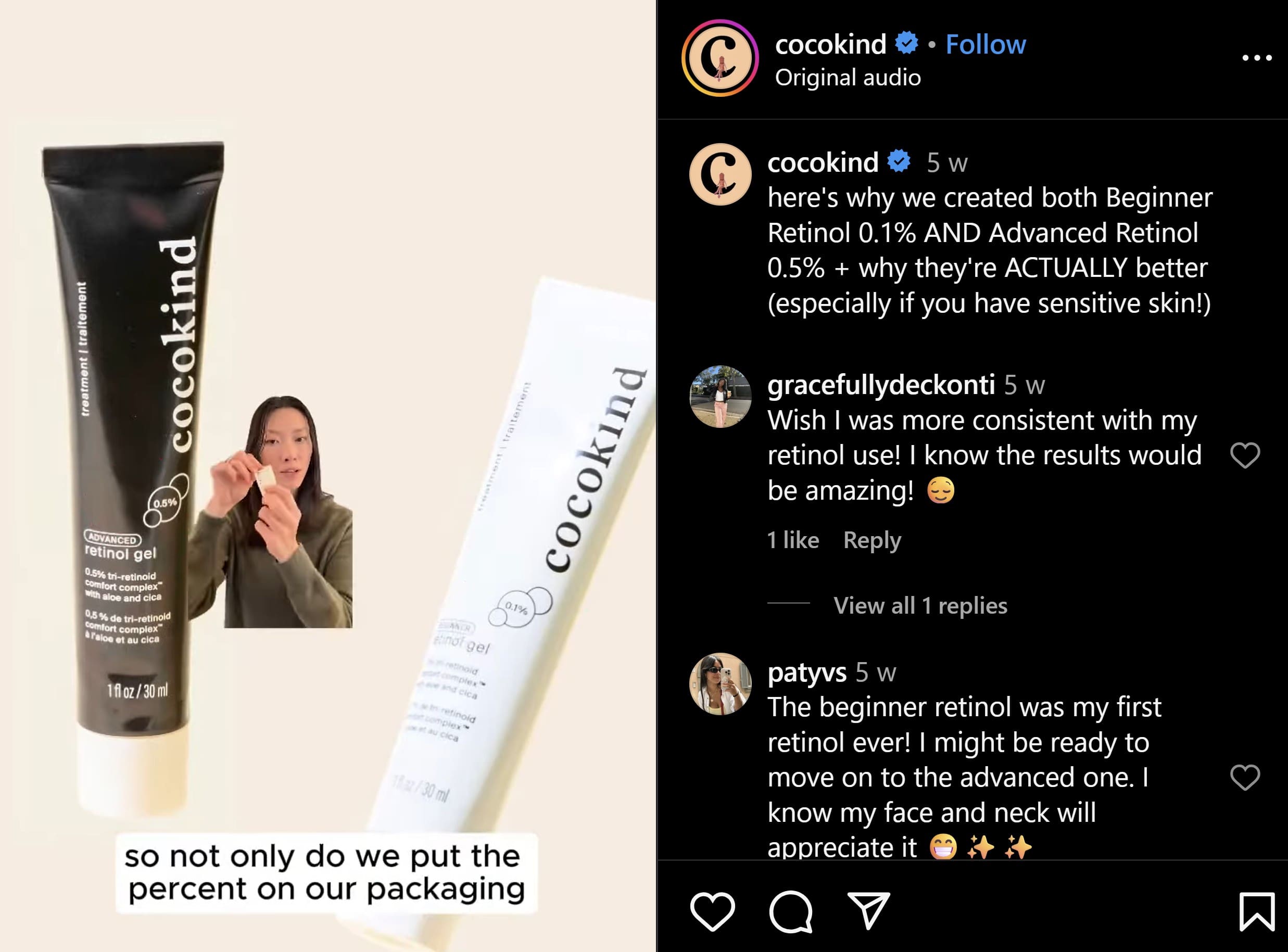
Their creator partnerships feel more like expert advice or journal entries than ads. And they pair that with strong comments engagement, proof that the platform and the message are in sync.
Vet all your influencers.
Your job here is to assess not just how many people are watching, but who they are, why they trust the creator, and how they respond when that creator makes a recommendation.
To vet with precision, look for:
- Low fake followers
- Content consistency and tone fit
- Engagement quality over engagement rate
- Past partnerships and saturation (their feed shouldn't be an ad carousel)
- Conversion signals (e.g., social proof in the comments, past data from them directly)
This is ALF's Kitchen (@ALFsKitchen1). He's a micro-influencer who posts short-form videos of his unique takes on burgers, bar foods, and steaks.
ALL of his feed is audience-first content. Nothing is directly commercial.
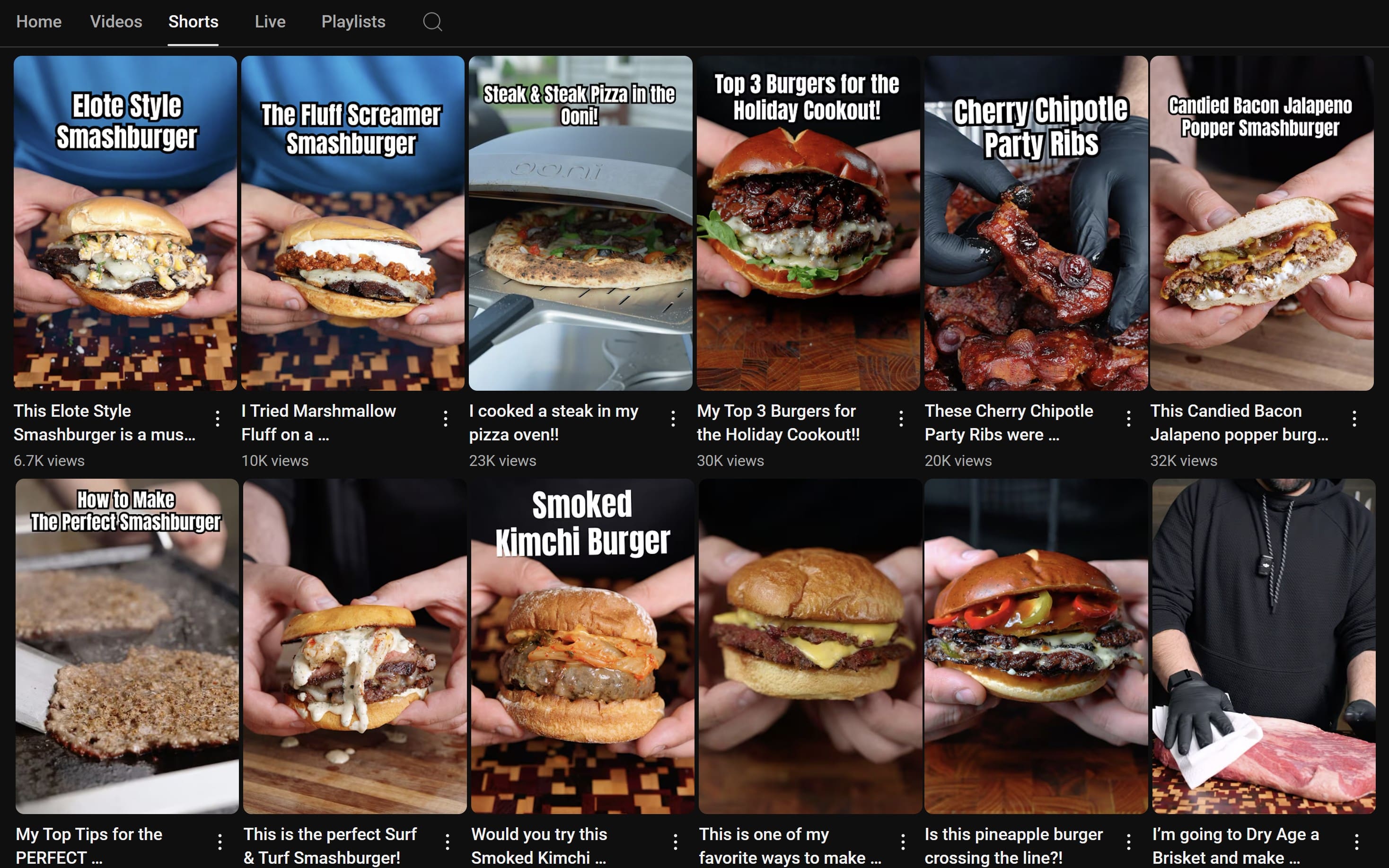
And his comment sections look like this:

With about 30 seconds' worth of vetting, we can see this is the type of guy people will buy from.
You’ll also want to see if someone’s followers are real. Every influencer marketing platform offers a free fake follower checker. We like the one from HypeAuditor because it gives you an Audience Quality Score.
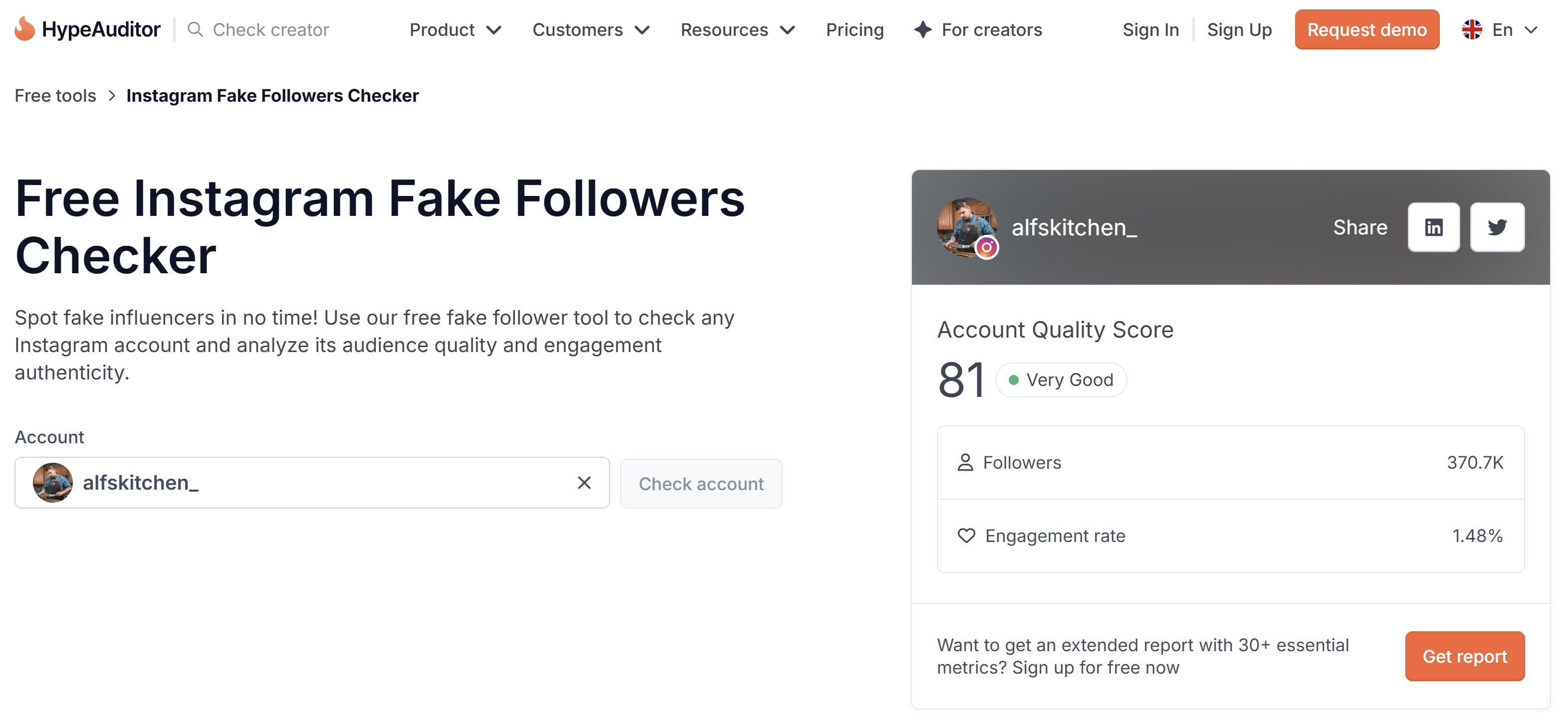
Use outreach templates that work.
Getting micro-influencers to say “yes” is about standing out, building trust fast, and showing value upfront. These creators get dozens (sometimes hundreds) of messages a week, most of which are generic, self-centered, or downright sketchy.
GROW YOUR INSTAGRAM FOLLOWING VIA OUR CELEBRITY CAMPAIGNS
Leverage the power of the worlds A-list celebrities to grow your Instagram every month
VIEW CAMPAIGNSBefore you hit send, understand their mindset:
- Clarity. What’s the offer? What’s expected of them? Don’t make them ask.
- Mutual fit. They want to know why them. If it’s copy-paste, they can tell.
- Creative freedom. Most micros want some control over how the product shows up on their feed (it’s their reputation on the line).
- Legitimacy. If you look like a scammy drop-shipping brand or have zero digital presence, you're dead on arrival.
- Compensation. Exposure is not a form of payment. If you’re gifting, be honest. If you’re paying, state the budget range early.
Start with a genuine comment about their content or why they’re a fit. Prove you’ve done your homework. Mention a specific post, theme, or shared value.
Hey [Name], I loved your recent post on [Topic] because [something personal].Then, introduce your brand and what you do in one sentence. Follow with what you’re offering and what you’re hoping for — e.g., a short-form video, IG Reel, or UGC you can repurpose.
I run a brand called [Brand Name]. We make [what you do in one line]. We're kicking off a new campaign in July and I think you’d be a perfect fit.Then, spell it out: are you offering product, payment, affiliate commission, or long-term partnership potential?
Would love to send you [product/gift/payment] in exchange for a collab (thinking IG Reel or TikTok-style review, but open to what feels authentic to you).And make sure you end with a low-pressure CTA.
Let me know if you're interested, happy to share more!
To maximize response potential, it's best to follow and engage first and avoid peak hours. A couple of thoughtful comments before outreach warms them up, and DMs sent during late nights or weekends get buried.
If you can find their business email, use that. It feels more professional and less spammy than DMs.
And use a CRM or simple spreadsheet to track everything. Follow up 5–7 days later if they haven’t responded.
Structure the collaboration strategically.
There are two main things to consider here: content deliverables and usage rights.
For the former, the key is to let creators be creators. You’re not hiring them to parrot your script. You want them to have as much freedom as possible.
It all depends on how involved the campaign is, but this is what we'd include in a collaboration brief:
- Campaign goal (awareness, conversions, UGC)
- Content expectations (e.g., 1x IG Reel + 3 story slides with swipe-up)
- Key product benefits or angles to cover
- Creative do’s and don’ts (tone guidelines, no swearing if you’re a kids’ brand)
- Timeline (when to post, when to submit drafts if needed)
- Usage rights (More on that in a second)
- Payment terms (Upfront? On delivery? Net 30?)
Now, the latter is what most brands miss. If you want to repost the content on your social media, use it in paid ads, add it to your website or product page, or turn it into part of a case study or email campaign... then you need permission
Always clarify how you can use the content, and for how long. Plenty of influencers are totally fine with full usage, but they’ll charge more for paid ad rights or long-term licensing.
Plan for ongoing engagement.
A single shoutout won’t always move the needle. But a well-planned series of posts, or an ongoing relationship, can. That’s why, at Influize, we always ask ourselves: How can I turn this into a rolling partnership?
Here’s how we'd approach it:
- Start small.
- If it performs well, offer a multi-month collab (e.g., 2 TikToks per month for 3 months).
- Add incentives: affiliate commissions, exclusive discount codes, performance bonuses.
- Repurpose top-performing content across your funnel: social ads, email, retargeting, even press kits.
How to budget for micro-influencer campaigns
Most micro-influencers (especially 10k–100k followers) expect compensation. On the low end, an influencer with 10k followers might charge $100. On the high end, someone with 100k and counting might charge $1,500 or more if they have an engaged audience. On top of that, UGC-style content or bundles (like a TikTok + IG post + Stories) will go higher.
And if you plan to repurpose their content, factor in usage rights. This can add 25–100% to the base fee.
Let’s say you’ve got $5k to work with. Here’s a strategic breakdown:
- $2,500 → Paid collaborations with 5–7 mid-tier micros (20k–75k followers)
- $1,000 → Product seeding kits for 30–50 nano-influencers (under 10k followers)
- $1,000 → Paid amplification (boosting top-performing creator posts via Spark Ads or Meta’s branded content ads)
- $500 → Tools for vetting and outreach
This gives you a mix of guaranteed posts, organic UGC, and paid reach — all while testing what types of creators and content actually drive results.
Campaign types that work best with micro-influencers
Not every campaign type is a fit. To get the most out of your efforts, you need to choose the right format based on your specific business goals: Clicks? Sales? Trust? Social proof? Community buzz?
Let's look at your options and when to choose each one:
Product features, testing, and endorsements
This is the most common (and straightforward) campaign type: influencers receive your product, try it, and share their experience. It's great for building credibility, generating evergreen social proof, and educating niche audiences about key features.
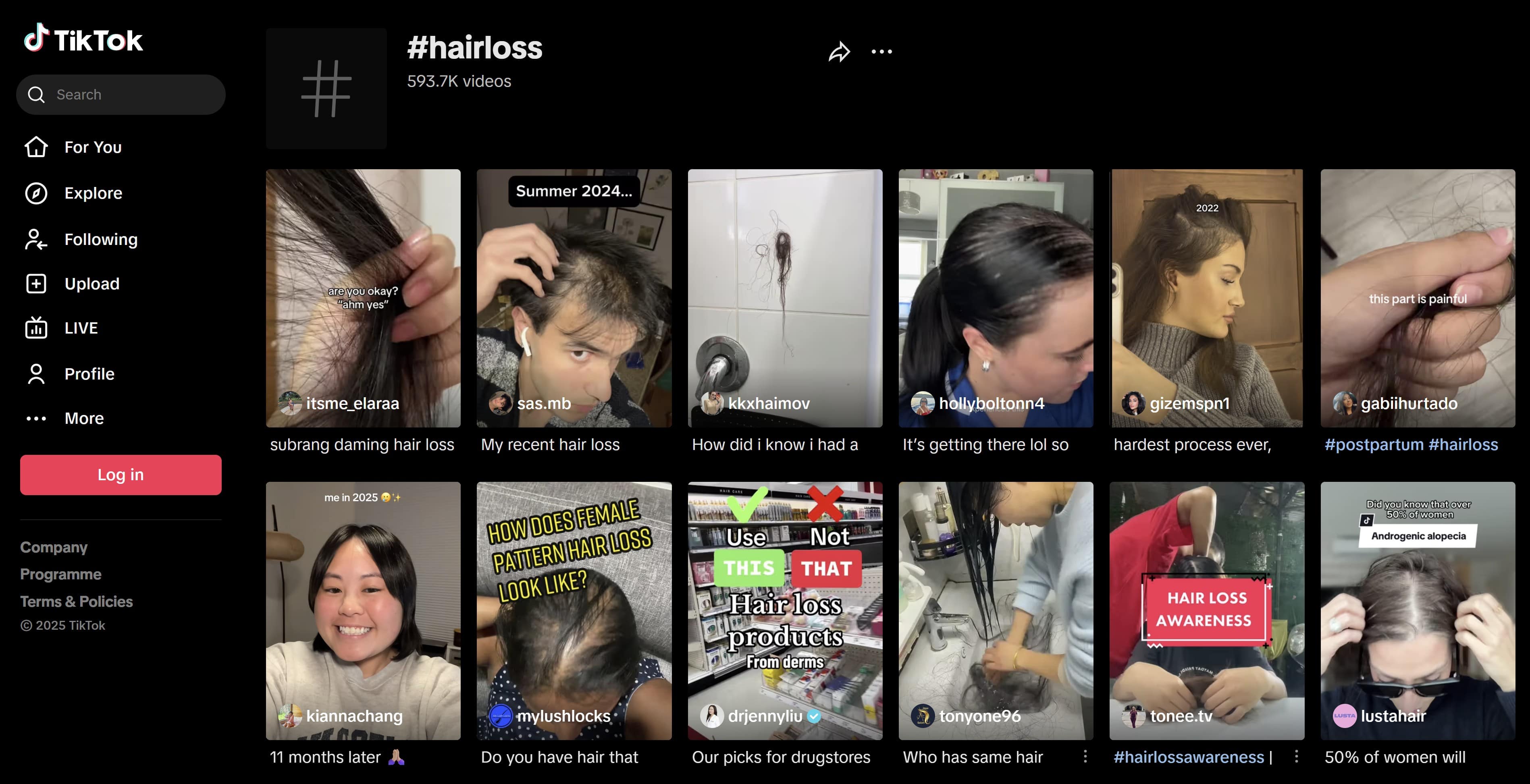
How to win: Let creators test the product in real-world conditions. For tech, wellness, fitness, or beauty products, creators who document the journey over time (“30 days using this product”) tend to outperform one-off shoutouts.
Product seeding campaigns
93% of influencers say they’re willing to make content in exchange for free products, but product seeding works better for creators under 15–20k followers who are genuinely excited about your brand. You send them a free product with no obligation to post, but include a note or email that encourages them to share if they love it.
It's a good idea to follow your target influencers because you might also find a golden opportunity to seed your product out of the blue, like Airbnb did when Alix Earle posted about the villa she booked in Positano being a scam.
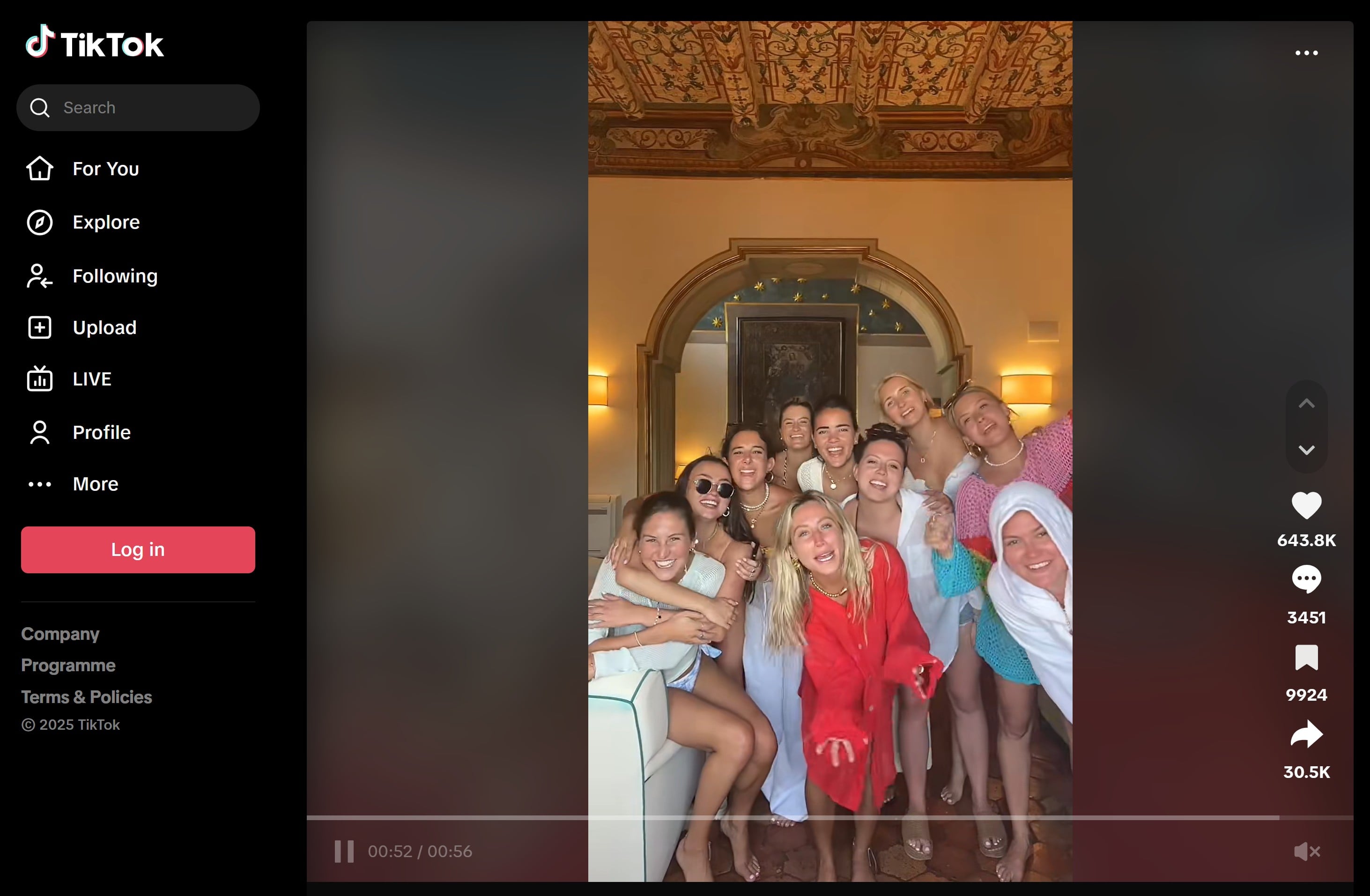
How to win: Don’t cheap out. Package the gift like a premium experience. Handwritten notes, custom boxes, or exclusive early access go a long way.
UGC generation for paid ads
If your goals are to boost ROAS on Meta/TikTok ads and fill your content pipeline with social proof, user-generated content (UGC) is the way. You can hire micro-influencers to give you video, photo, and testimonial assets you can repurpose in paid media.
How to win: Be upfront in your brief that the content is for ad use. Give basic framing (e.g., “show the unboxing,” “talk about X feature,” “end with a call to action”), then let them do their thing.
Affiliate and discount code partnerships
You can work with partners that turns influencers into revenue partners. You give them a custom code or link, track their sales, and reward them with commission. It's the clear winner for driving conversions at scale and facilitating long-tail product sales, especially if their content has viral potential.
How to win: Give each influencer a landing page, solid creative assets, and real-time access to their stats. Consider tiered rewards: if they hit X sales, bump their commission or unlock a bonus. And use influencers’ content as part of your retargeting ads.
Local store promotions and event coverage
Restaurants, boutique gyms, wellness centers, beauty clinics, and experiential retail brands can use micro-influencers to drive real-world foot traffic.
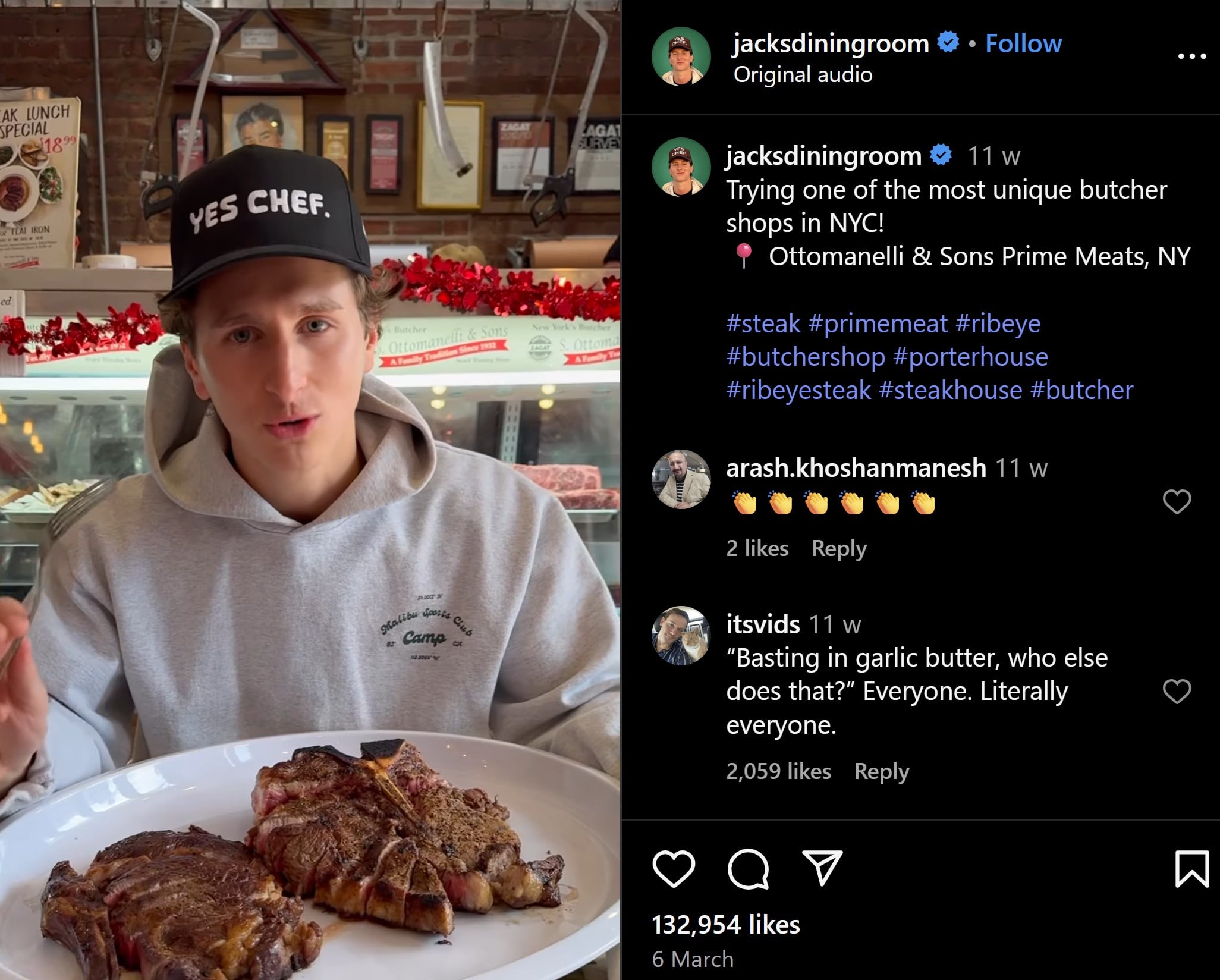
How to win: Invite creators who are truly local and culturally plugged in. Offer perks like free services, first access, or VIP status. And encourage them to capture behind-the-scenes content, Q&As, and personal moments to make their audience feel invited.
B2B influencer collaborations
SaaS, fintech, and consulting companies can work with micro-influencers who have specialized expertise and an engaged professional audience. Collaborate with people who already use (or would benefit from using) your product to build thought leadership and drive high-intent leads.
How to win: Collaborate on co-branded content like case studies, product walkthroughs, or webinars.
Performance tracking and ROI measurement
You should be tracking micro-influencer performance across three buckets:
- Content performance (platform metrics): These are the raw engagement numbers from each post: reach, impressions, likes, comments, saves, shares, view time and view-through rates (for video content), and follower growth (yours and theirs).
- Traffic and conversions (attribution metrics): To track actual business outcomes, you need UTM-tagged links, promo codes tied to individual influencers, custom landing pages, and Google Analytics or Shopify source reports.
- Content repurposing value: How well did the influencer content perform outside their own channel? Outperforming your in-house ads, using the content in retargeting, and generating social proof you can use on your PDPs, email flows, or investor decks are all good signs.
You should also look for engagement quality. Are people asking questions? Tagging friends? Mentioning intent to buy?
Micro-influencer mistakes to avoid
Problems with micro-influencer campaigns usually stem from poor strategy, misalignment, or lack of follow-through.
Here's what NOT to do:
- Treating influencers like billboards instead of partners
- Ignoring audience-brand fit
- Overloading one-off posts
- Glossing over deliverables and rights agreements
- Doing it just for exposure, without micro-creator UGC
- Neglecting the long-term investments of follow-up and relationship building
Avoiding these mistakes will position you to scale a high-performing influencer program and build a network of on-demand creators over time. By extension, you'll have some of their fanbases as your own.
Top micro-influencers in the USA
| Name | Instagram Handle | Followers | Engagement Rate | Niche | Location |
|---|---|---|---|---|---|
| Vanessa Ledbetter | @farmhousepeachco | 28.1K | 6.87% | Fashion & Beauty | Georgia |
| Kyle Luigs | @kyle.luigs | 31.3K | 2.72% | Sports (Baseball) | Georgia |
| Holly Brand | @misshollybrand | 22.4K | 11.69% | Music | Mississippi |
| Valerie L | @officially.val | 46.8K | 11.69% | Lifestyle & Fashion | Not specified |
| Lindsey Regan Thorne | @lindseyreganthorne | 38.7K | 3.2% | Beauty & Makeup | North Carolina |
| Alli Schapel | @blackarrowblog | 34.2K | 2.45% | Fashion & Travel | New York City |
| Connor Trimble | @connortrimble | 91.9K | Not specified | Surf & Photography | Honolulu, Hawaii |
| Conni Jespersen | @artinthefind | 88.8K | Not specified | Fashion & Lifestyle | San Diego, California |
| Destiny Petrel | @destinypetrel | 86.9K | Not specified | Music & Lifestyle | Los Angeles, California |
| Joshua Snow | @j.snow_photo | 87K | Not specified | Photography | Moab, Utah |
Top fashion micro-influencers
| Name | Instagram Handle | Followers | Engagement Rate | Niche | Location |
|---|---|---|---|---|---|
| Vineeta Bhardwaj | @official.vineeta_fashion | 25K | 7.97% | Fashion & Lifestyle | New York, NY |
| IV COLE | @ivcole_fashion | 7K | 7.90% | Fashion & Modeling | Chicago, IL |
| Fashion Elitist | @fashion.elitist | 125K | 7.13% | Fashion & Streetwear | New York, NY |
| Zachry Smith | @smithzachry | 12K | 7.08% | Makeup & Fashion | San Antonio, TX |
| Mel | @melanieyuuu | 6K | 6.63% | Fashion & Travel | San Francisco, CA |
| Gabriel Frias | @fritooo_95 | 5K | 5.63% | Fashion & Lifestyle | Los Angeles, CA |
| Aurora Luis | @fashionfaguette | 55K | 5.38% | Fashion & Styling | New York, NY |
| Kam Tunechi | @kamtunechi2 | 56K | 5.33% | Fashion & Lifestyle | Venice, CA |
| Cristian Paez | @paez.photo | 7K | 5.17% | Fashion Photography | Uniondale, NY |
| Parker Zinn | @parker_zinn | 7K | 4.91% | Knitwear & Fashion | New York, NY |
PR lists for micro-influencers
The truth: brands don’t randomly send out freebies. Building a PR list, which is essentially a living list of vetted creators, gives you faster campaign launches because you're not starting from scratch every time. And it's essential for relationship tracking (who you’ve gifted, paid, or built rapport with).
Within a PR list, you can also segment everyone by niche, performance, location, tier, or content format.
At minimum, your list should track the following in separate columns:
- Name + handle(s)
- Platform(s)
- Niche / Industry
- Follower count + engagement rate
- Location
- Contact info
- Past interactions
- Notes (e.g., personality, content themes, tone fit)
- Performance data (CTRs, conversions, content saved)
- Repurposing rights
You can build this in Excel, or you can use a dedicated CRM/influencer marketing platform to create it.
Brands that work with micro-influencers
According to Aspire.io's State of Influencer Marketing 2024 report, 57% of marketers now prioritize micro-influencers over big names. Practically every brand uses influencers to some degree, so let's focus on a few who are doing it well.
Glossier
Glossier was built on community. Long before they reached mainstream status, they prioritized everyday skincare lovers, beauty minimalists, and college students who genuinely loved the product.
At the beginning, micro-influencers created organic content before any formal partnership. Glossier then identified the best performers and invited them into their rep program, which was a hybrid between ambassador, affiliate, and content creator.
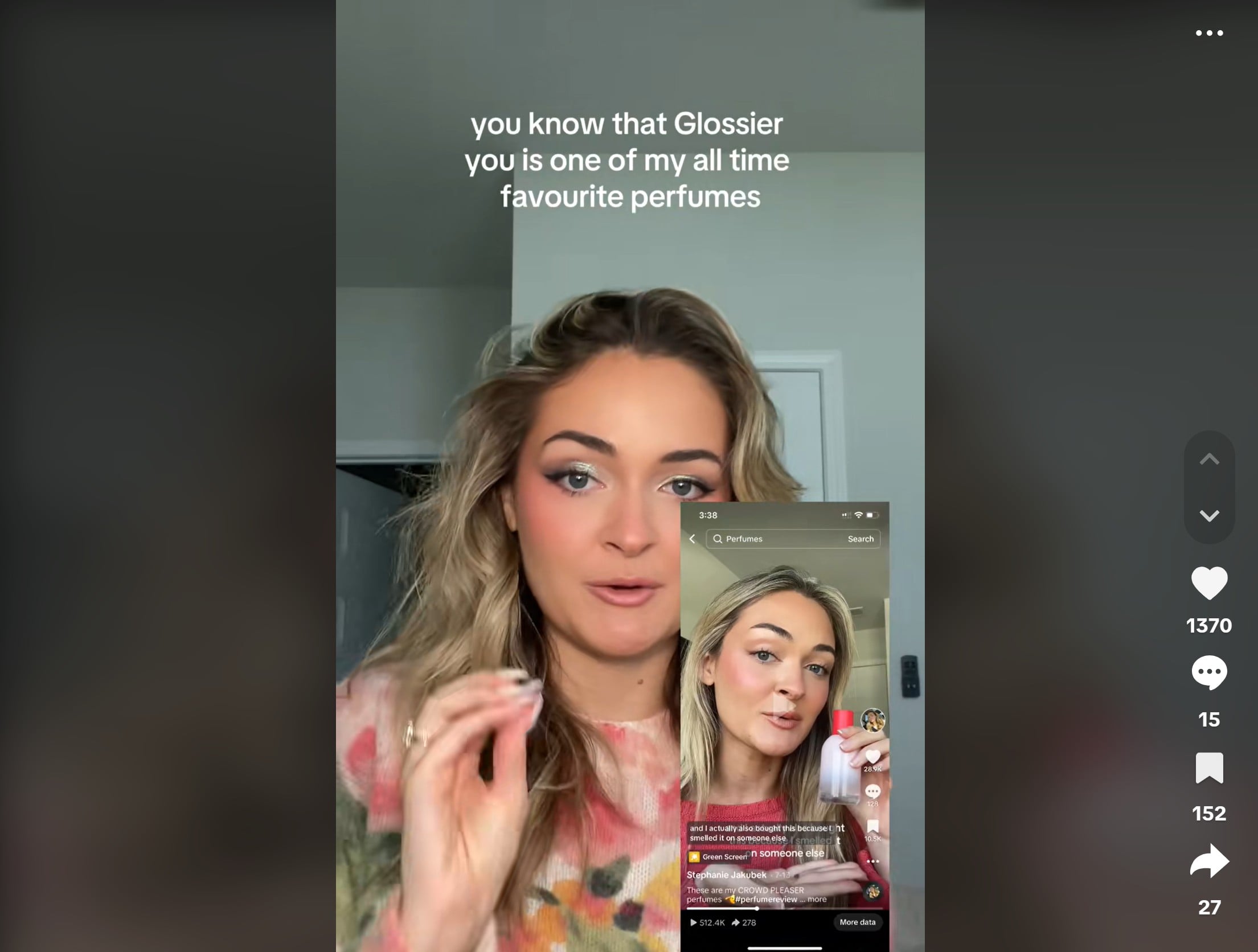
Gymshark
Gymshark famously avoided big-name athletes in the early days and instead focused on everyday fitness creators with 10k–50k followers. These people built the brand from the ground up by documenting their workouts, progress photos, routines, and silly content while wearing Gymshark gear.
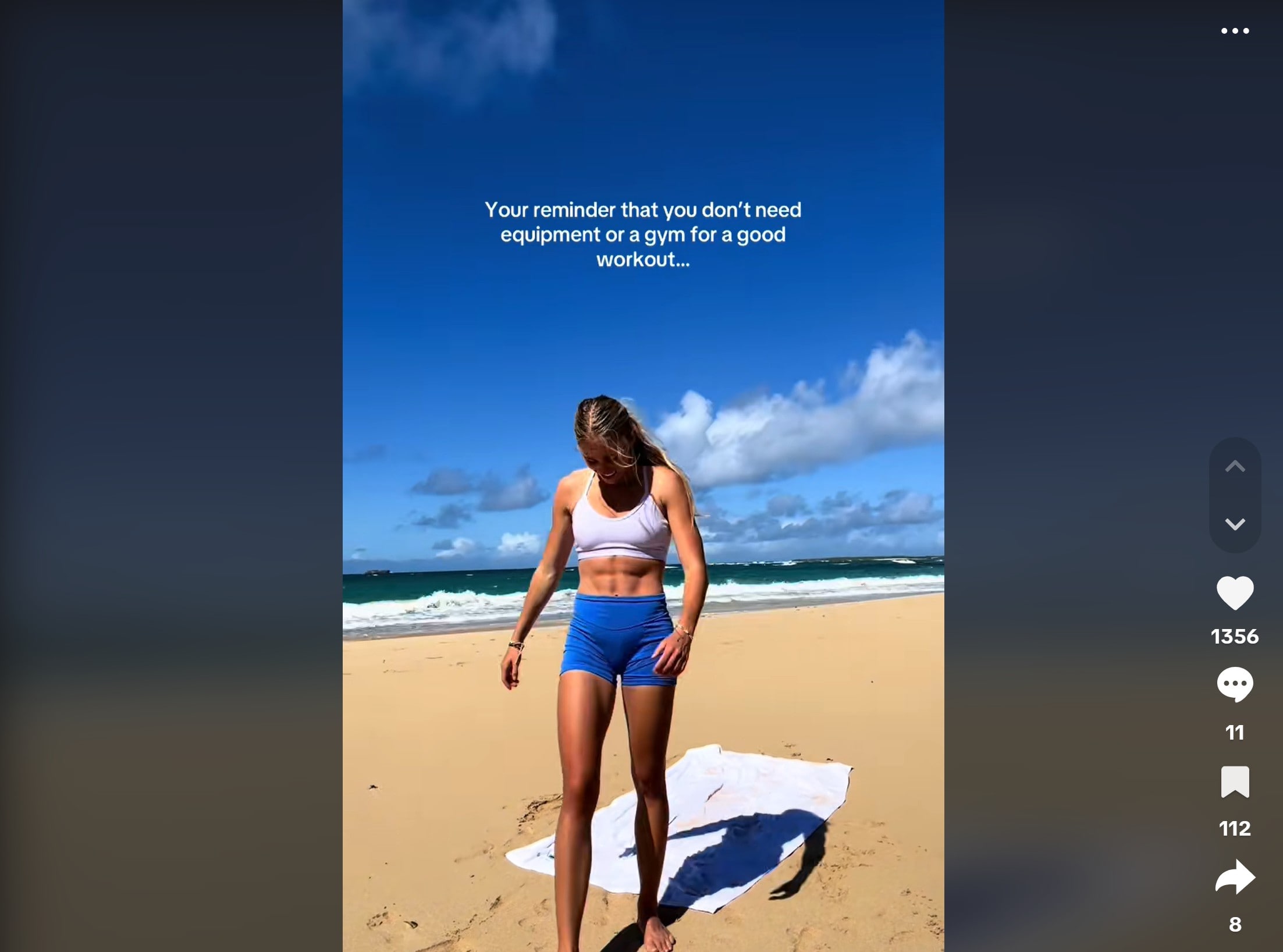
Dossier
Dossier, which sells affordable perfume dupes of luxury scents, exploded in popularity through TikTok and Instagram micro-influencers. Their model: mass product seeding combined with occasional paid partnerships, letting creators post reviews, unboxings, and scent comparisons at their own pace.

Manscaped
Manscaped broke through by leaning hard into humor, relatability, and micro-influencers who don’t take themselves too seriously. Think: gym bros joking about body hair, podcasters plugging Manscaped mid-episode, or lifestyle creators walking through grooming routines with tongue-in-cheek commentary.

Future of micro-influencers: what’s in store after 2025?
There are a few things we see on the horizon:
Hyper-niche targeting will dominate.
As algorithms become smarter and brands aim for ultra-precise targeting, micro-influencers who cater to very specific audiences (e.g., eco-friendly moms, indie game designers, carnivore fitness influencers) are becoming increasingly sought-after.
AI will enhance influencer discovery.
In fact, it already does. Tools like Stack Influence use AI to match brands with micro-influencers based on niche interests, demographics, and purchasing behavior.
That means you can use it to:
- Match with ideal influencers based on behavioral and psychographic data
- Predict campaign ROI based on past performance and audience sentiment
- Automate vetting processes (e.g., fake follower detection, brand safety, tone analysis)
For instance, you can use Stack Influence's platform to identify pet owners who post about organic pet care, streamlining the influencer selection process for brands.
Influencers will start offering service packages.
Not just “a post and a story and send me the money,” but full-on media kits, UGC packages, and even monthly subscriptions (e.g., 4 reels + 2 email shoutouts per month). Think: the “Gumroad-ification” of influencer marketing.
Trend.io already allows creators to apply, list their services and set prices, then connect with brands who need UGC.
Micro-influencers will evolve into community leaders.
Private Discords, WhatsApp groups, or Substack communities are becoming more and more commonplace, as are exclusive product drops and co-created products between influencers and brands.
Global micro-influencers will rise.
Non-U.S. micro-influencers, especially in LATAM, Southeast Asia, and Eastern Europe, will grab a larger share of brand deals as companies globalize their reach but localize their messaging.
More data, platforms, and brands will be creator-owned.
Expect a push toward influencer-owned storefronts and direct sales tools (e.g., Beacons, Stan Store, Koji). It's becoming easier for micro-influencers to monetize more directly and rely less on third-party platforms.
This is a two-way street. Since people trust micro-influencers more, founders are investing in becoming influencers themselves as a way to promote their own DTC, SaaS, and info products.
Like Reece, a co-founder of Sabre Supplements:
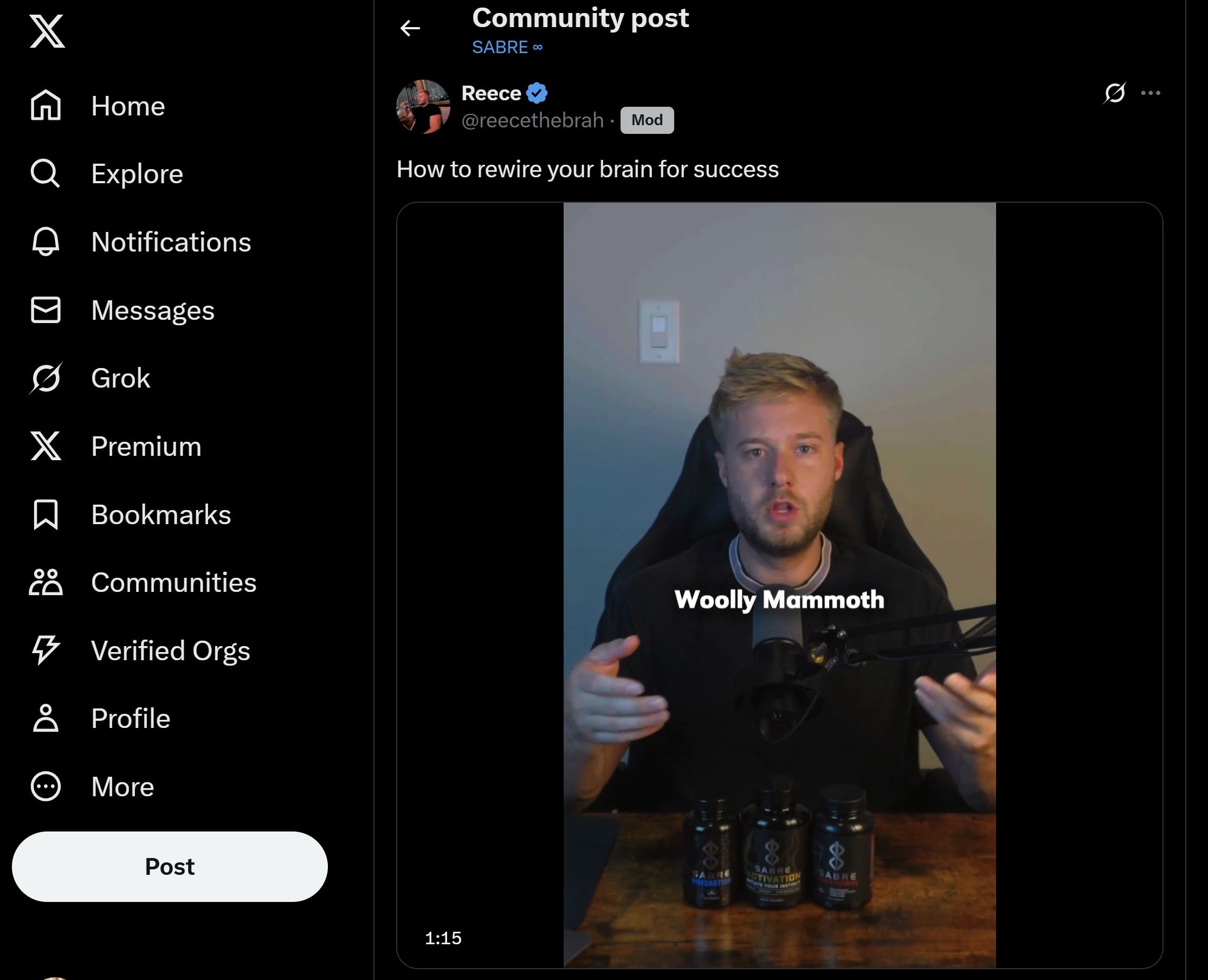
Do micro-influencers work for B2B brands?
Yes, and increasingly well. Micro-influencers in the B2B space often look like niche subject-matter experts. They're consultants, creators, or operators with engaged followings on LinkedIn, Twitter (X), or YouTube.
They might not have millions of followers, but they do have trust with high-level decision-makers. Think: a RevOps expert showcasing your CRM tool, or a SaaS founder walking through their favorite automation stack.
For B2B, we normally see success come from case study-style content, product walkthroughs, and thought-leadership collaborations.
How to spot fake micro-influencers
The easiest way to tell is by their engagement quality. Here’s what to look out for:
- Lots of likes, but generic or bot-like comments (“Nice post!”)
- Follower spikes without corresponding content virality
- Inconsistent content themes
- Low story views compared to follower count (ask for screenshots)
Use a tool like HypeAuditor or Modash to dig into follower authenticity, engagement trends, and audience demographics.
Is it better to gift or pay micro-influencers?
It depends on the influencer, the campaign type, and your budget.
- Gifting works best for smaller creators (under 15k followers) and when launching new products or generating organic UGC. But there’s no guaranteed post.
- Paid collabs make more sense when you need structured deliverables, want usage rights, or are working with creators who regularly monetize their platforms.
Best strategy: Combine both. Seed products to nano-influencers for organic buzz and pay a select group of micro-influencers for polished, high-leverage content you can repurpose.
Conclusion
Micro-influencers are one of the most powerful tools for building trust, generating authentic content, and driving measurable results across every stage of your marketing funnel.
But like any strategy, success depends on execution. Without the right influencer selection, platform alignment, messaging strategy, and performance tracking, you'll end up with content that looks good but doesn’t convert.
If you want to skip the guesswork, we can help. We’ll build you a fully customized influencer marketing campaign, tailored to your brand, audience, and goals.

